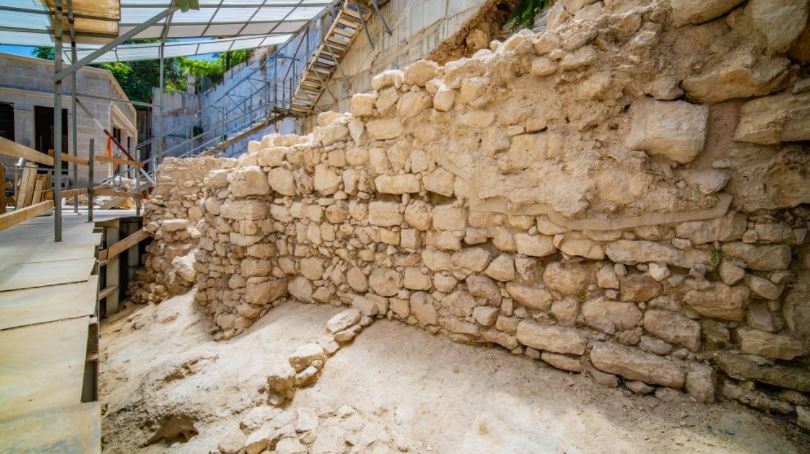Archaeologists excavating in the City of David National Park in Jerusalem have uncovered the remains of the city wall from First Temple times.
The revelation comes just days ahead Tisha B’Av – the ninth day of the Hebrew month of Av – when Jews around the world mark the destruction of both the First and Second Temples as well as other tragedies that have befallen the Jewish people.
The excavations, conducted by the Israel Antiquities Authority (IAA), revealed a section of the city wall that would have protected Jerusalem for 150-200 years from sometime in the 8th century BC until the city was breached by the Babylonians and the Temple destroyed in 586 BC.
“The city wall protected Jerusalem from a number of attacks during the reign of the kings of Judah, until the arrival of the Babylonians who managed to break through it and conquer the city,” said excavation directors, Dr. Filip Vukosavović of the Ancient Jerusalem Research Center and Dr. Joe Uziel and Ortal Chalaf on behalf of the IAA.
“The remains of the ruins can be seen in the archaeological excavations. However, not everything was destroyed, and parts of the walls, which stood and protected the city for decades and more, remain standing to this day,” they added.
***Please sign up for CBN Newsletters and download the CBN News app to ensure you keep receiving the latest news from a distinctly Christian perspective.***

The newly exposed section that was exposed was probably more than eight feet tall and some 16 feet wide. It connects two other sections that were previously excavated.
British archaeologist Kathleen Kenyon uncovered a section of the wall on the northern part of the eastern slope in the 1960s and dated it to the Kingdom of Judah. About 10 years later, archaeologist Yigal Shiloh uncovered a long stretch of the wall on the southern part of the slope.
For decades, archaeologists searched for the missing link, leading some to believe that the other two monumental structures were not the remains of the wall of Jerusalem. Now, archaeologists believe this new discovery connects the earlier sections and indicates that this was indeed the eastern section of the wall around ancient Jerusalem.
In 2 Kings 25:10, the Bible describes the conquest of the city: “The whole Babylonian army under the commander of the imperial guard broke down the walls around Jerusalem.”
But archaeologists say they apparently did not break down the wall on the eastern slope, probably because of the steep climb up from the Kidron Valley.
Near the wall, archaeologists found a Babylonian stamp seal made of stone and depicting a figure standing before two Babylonian gods. They also found a bulla (clay seal impression) bearing the Judean personal name, “Tsafan.”


